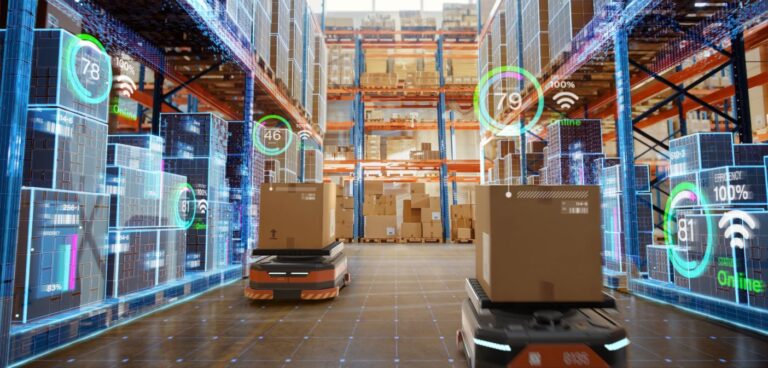Harnessing AI in Warehouse: Optimizing Inventory Management with Computer VisionPosted by Nitin Jain on May 10th, 2024 Summary: Explore the transformative impact of AI in warehouses and how real-time inventory tracking revolutionizes logistics, enhances efficiency, and minimizes costs.
Introduction: Welcome to the era where AI in warehouse operations redefines efficiency & productivity. In the heart of this transformation lies computer vision, a cutting-edge technology that is empowering businesses to optimize inventory management like never before. The fusion of AI and real-time inventory tracking not only enhances accuracy but also drives productivity to unprecedented heights. Let’s delve deeper into how computer vision is reshaping the landscape of warehouse management. The Rise of Computer Vision in Warehousing: In recent years, the adoption of computer vision technology has surged across various industries, particularly in warehousing. According to a report by Markets and Markets, the global computer vision market is projected to reach .1 billion by 2027, with a compound annual growth rate (CAGR) of 7.9%. Gone are the days of manual stock checks and tedious data entry tasks. Today, AI-driven solutions powered by computer vision are streamlining warehouse operations like never before. Real-Time Inventory Insights: One of the primary challenges in warehouse management has always been maintaining accurate inventory records. Traditionally, this involved manual counting and periodic audits, leading to inefficiencies and inaccuracies. However, with real-time computer vision systems, businesses can gain instant visibility into their inventory levels with remarkable precision. Enhanced Accuracy with AI: Computer vision algorithms, powered by AI, can accurately identify and classify objects in real-time, significantly reducing errors associated with manual inventory tracking. By leveraging cameras and sensors strategically placed throughout the warehouse, these systems continuously monitor stock movements and update inventory records instantaneously. Streamlined Operations: Imagine a warehouse where shelves automatically detect when items are added or removed, updating inventory levels in real-time without human intervention. This level of automation not only minimizes the risk of stockouts or overstocking but also optimizes storage space and replenishment processes. Who has already deployed the technology? Several industry leaders have already embraced computer vision technology to revolutionize their warehouse operations. For instance, Amazon utilizes AI-powered cameras to track inventory movement, enabling seamless fulfilment of customer orders. Similarly, Walmart has implemented computer vision systems to improve inventory accuracy and optimize stocking processes across its vast network of stores. Future Outlook: As technology continues to evolve, the future of inventory management lies in real-time inventory insights and predictive analytics. By providing real-time insights and automation capabilities, these technologies empower businesses to enhance efficiency, reduce costs, and deliver superior customer experiences. AI-driven inventory management solutions powered by computer vision are reshaping the landscape of warehouse operations. As we continue to embrace the possibilities of AI, one thing is clear: the future of inventory management has never looked more promising. Are you ready to embrace the power of AI and computer vision in your warehouse operations? Like it? Share it!More by this author |



